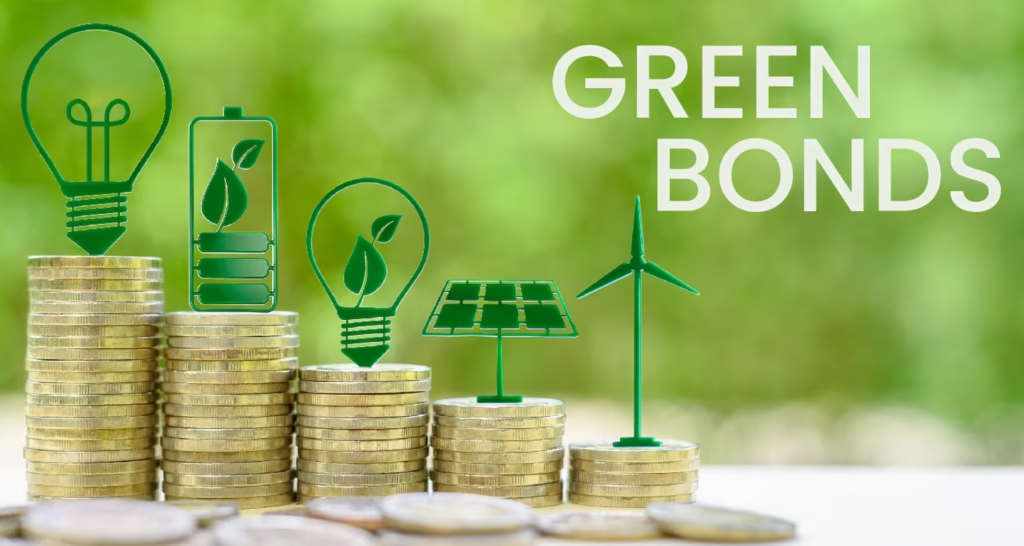Green bonds in India are debt instruments that fund environmentally sustainable projects, aligning with India’s net-zero emissions target by 2070. Green bonds are a key tool for eco-conscious investors. What are green bonds, and how can you invest in them? Let’s break it down.
What Are Green Bonds and Why Do They Matter?
Green bonds are fixed-income securities used to raise funds specifically for environmental or climate-related projects. They work just like traditional bonds but are earmarked for green projects.
In India, the Securities and Exchange Board of India (SEBI) introduced guidelines for green bonds in 2017. These regulations ensure transparency in the use of proceeds and align with international standards like the Green Bond Principles.
According to the India Brand Equity Foundation (IBEF), India issued over USD 10 billion in green bonds by 2023. This growth reflects strong investor interest, especially among those focused on ESG investing (Environmental, Social, and Governance).
Growth of Green Bonds in India’s Financial Ecosystem:
India’s green bond market has grown steadily, supported by public and private players. The RBI issued its first sovereign green bond worth ₹8,000 crore in 2023. These funds support clean transport, renewable energy, and biodiversity conservation. Large corporations like NTPC and REC have also joined the movement. For example, REC’s green bond issuance in global markets reflects India’s commitment to sustainable development.
Moreover, India’s G20 presidency in 2023 highlighted sustainable finance as a global priority, boosting awareness and policy support for green bonds. In addition, platforms like the India International Exchange (India INX) are simplifying access to climate bonds for investors.
Compliance and Key Rules:
- Regulatory Framework: SEBI mandates issuers to disclose fund usage via audited reports, aligning with RBI’s green project guidelines. Listed companies follow Business Responsibility and Sustainability Reporting (BRSR).
- Tax Reporting: Declare interest income in ITR-2 under “Income from Other Sources” and capital gains under “Capital Gains” by July 31, 2025 (FY 2024-25), per Section 139. Interest faces 10% TDS under Section 194A.
- Documentation: Maintain bond certificates and Form 26AS/AIS for TDS verification. Non-PAN submission risks 20% TDS under Section 206AA, per CBDT.
- Verification: Issuers must ensure 100% of proceeds fund green projects, certified by external auditors.
Opportunities and Challenges:
Despite rapid growth, green bonds in India face several hurdles. One challenge is the limited pipeline of verified green projects. Moreover, many investors still lack awareness of ESG benefits and standards.
However, the future looks promising. Government incentives and regulatory clarity are making green finance more attractive. For instance, tax exemptions and policy reforms are encouraging both issuers and buyers. India’s renewable energy sector—expected to reach 500 GW by 2030 (IBEF)—will need massive financing. Green bonds provide a scalable, transparent way to fund this ambition.
Conclusion:
Green Bonds in India offer a blend of financial and environmental rewards but require diligent tax and regulatory adherence. As India accelerates its transition to a net-zero economy, green bonds will play a central role. Ready to invest in a greener future? Explore more financial insights now!
– Ketaki Dandekar (Team Arthology)
Read more about Green Bonds here – https://corporatefinanceinstitute.com/green/
